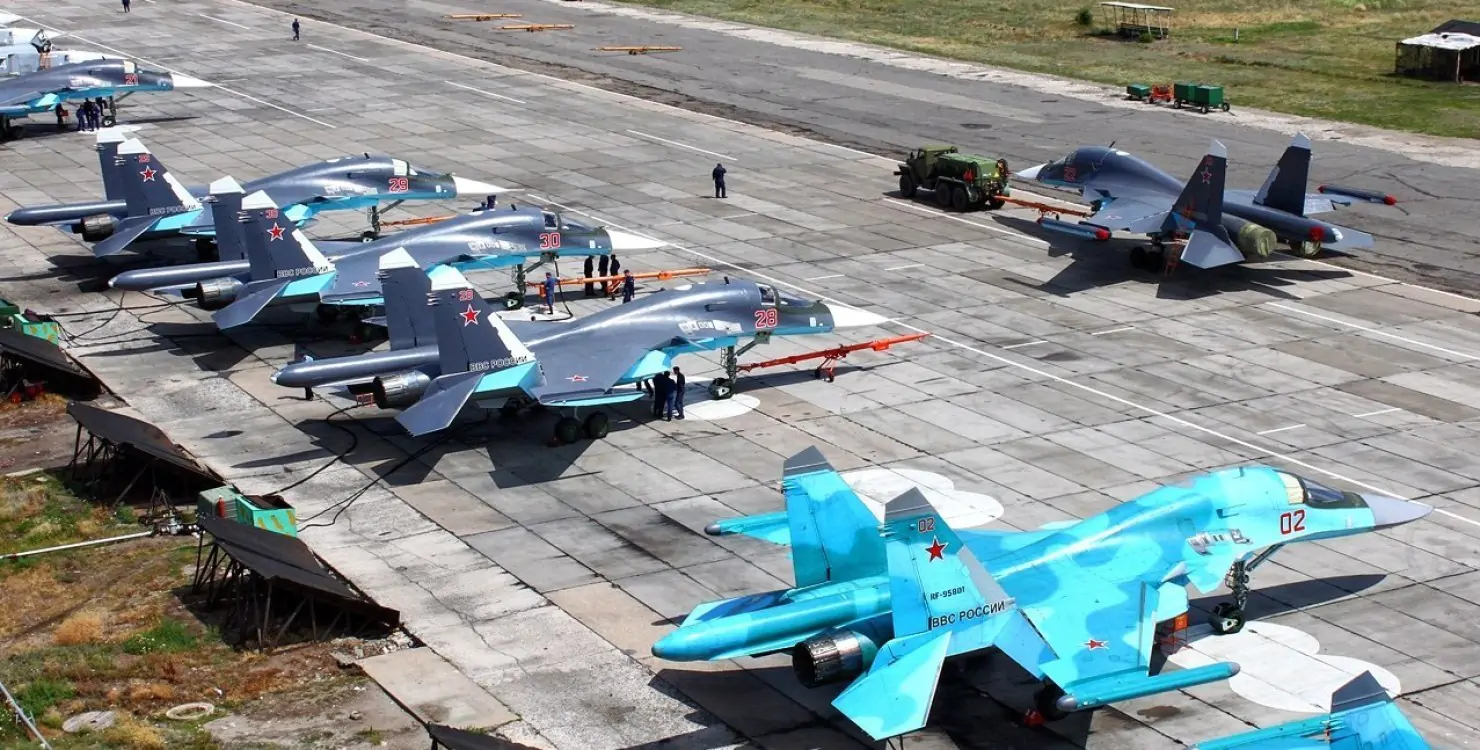Ukraine renewed long-range drone attacks against Russia’s energy infrastructure on Thursday, hitting a fuel storage base deep inside the central Voronezh region and setting it ablaze.
Local officials said the air raid targeted the Annanefteprodukt refinery, near the village of Anna, 80 kilometers east of the major Russian industrial city Voronezh. Likely Ukrainian drone launch sites were 300 kilometers away from the fuel processing and storage facility.
JOIN US ON TELEGRAM
Follow our coverage of the war on the @Kyivpost_official.
Local air defenses announced the incoming strike shortly before midnight and the first reports of drone presence in Voronezh air space were between 2 and 3 a.m. Social media audio recorded contained the sound of propeller-driven aircraft.
Voronezh governor Aleksandr Gusev in a statement said local air defenses shot down all the robot planes and that a single fuel storage reservoir set alight by falling debris. The fire was extinguished quickly, and no one was hurt, he said.
“Our electronic warfare systems suppressed Ukrainian UAVs, one of which fell on the territory of an oil depot. An empty tank caught fire,” Gusev’s statement said in part.
Social media images geo-located to Anna village seemed to contradict Gusev’s narrative with video of at least one detonating spectacularly following a direct hit. Images from the scene published by the national Emergency Situations Ministry showed firefighters battling a major blaze that was not under control.

Russia, Ukraine Exchange Over 300 POWs Ahead of New Year’s Eve

Operators from Ukraine’s national spy agency, the SBU, along with military special operations teams carried out the raid, an official Ukrainian military statement said on Friday.
On Thursday in a major raid dozens of Ukrainian drones attacked the Voronezh region Borisoglebsk military airfield, a base used by the Russian Air Force for fighter operations and for launching bomber strikes against targets in Ukraine. The site is about 110 km east of the Anna oil refinery.
Regional officials said the Thursday attack failed thanks to powerful air defenses around the airfield, and neither aircraft nor ground installations were damaged.
Russia’s Defense Ministry in its Friday daily situation update made no reference to the Borisoglebsk airfield strike past noting that defense forces shot down 18 incoming Ukrainian drones in Voronezh region. Russian air defenses intercepted and destroyed another six Ukrainian drones in airspace above the Sea of Azov, and one above the southern Rostov region, that official Moscow statement said.
Friday images published by the NASA fire watch satellite network FIRMS and reviewed by Kyiv Post seemed to contradict the Kremlin narrative of effective defense of Voronezh region air space and little or no damage to Borisoglebsk airfield, showing two major fires burning for at least 24 hours at the base.
One blaze appeared to be in the vicinity of underground ammunition storage bunkers at one end of the airfield, and another major fire was in progress in the general area of tarmac where, prior to the strike, the Maxar satellite network recorded dozens of boxes similar to ammunition packing had been stacked in the open, Kyiv Post review of those images found.
A second, possible Ukrainian drone strike against Russian energy infrastructure also was reported on Friday, hitting an industrial region of the Ural region Perm.
According to official announcements and local news reports, a major fire broke out at a privately-owned oil depot near the Perm region village of Osentsy early in the morning, engulfing 10,000 square meters of base territory and setting multiple fuel storage reservoirs ablaze.
The Russian Emergencies Ministry in a statement said it deployed 60 responders and 19 vehicles to the scene and that the blaze was contained before it could spread to nearby homes and forest. The most likely causes of the fire were a failure of power equipment, or human error, the statement said in part.
The longest-range confirmed Ukrainian drone strike inside Russia took place on July 28, when less than ten unmanned aircraft reached Russia’s Arctic Circle region after a flight of at least 1,800 kilometers and attacked a bomber base near the city Murmansk with unclear results.

Some 1,500 kilometers east of potential Ukrainian drone launch sites, Perm is by that measure within Ukrainian striking distance. However, Kyiv since launching a bombardment campaign by drone against its giant eastern neighbor in June has rarely attempted attacks further than 700 kilometers.
Agil Rustamzade, a Baku-based military analyst, in a Friday Telegram analysis said that Ukraine has “probably” restarted its oil refinery bombardment campaign after a hiatus. The last substantial round of Ukrainian attacks against Russian oil refineries took place in early September.
President Volodymyr Zelensky has said that long-range drone production is a top national security priority, but that Kyiv has far fewer attack UAVs than the number of targets possible to hit in Russia. For effective degradation of Kremlin’s military infrastructure, Ukraine badly needs not just its own drones but advanced missiles and US permission to use them deep in Russia, the Ukrainian leader argues.
US officials citing concerns of escalation with the Kremlin have refused to turn over to Kyiv missiles with a range beyond 300 km., and even banned Ukraine from using more capable French and British missiles containing US targeting technologies, for long-range attacks into Russia.
Zelensky on Thursday without naming the country said that in his view major Ukrainian allies are dragging their feet on helping Ukraine defend itself, for fear of antagonizing Russia.
Germany’s major news magazine Der Spiegel in a Wednesday article said that were Ukraine’s allies to lift restrictions on use of NATO weapon strikes even 250 kilometers deep into Russia, Kyiv would be able to hit at least 261 major military targets including air bases, fuel storage sites and logistical centers inside Russia.
An expansion of the strike envelope along with sufficient weapons to make the attacks would likely cause serious damage to Russian war-making capacity, the article said.

You can also highlight the text and press Ctrl + Enter






